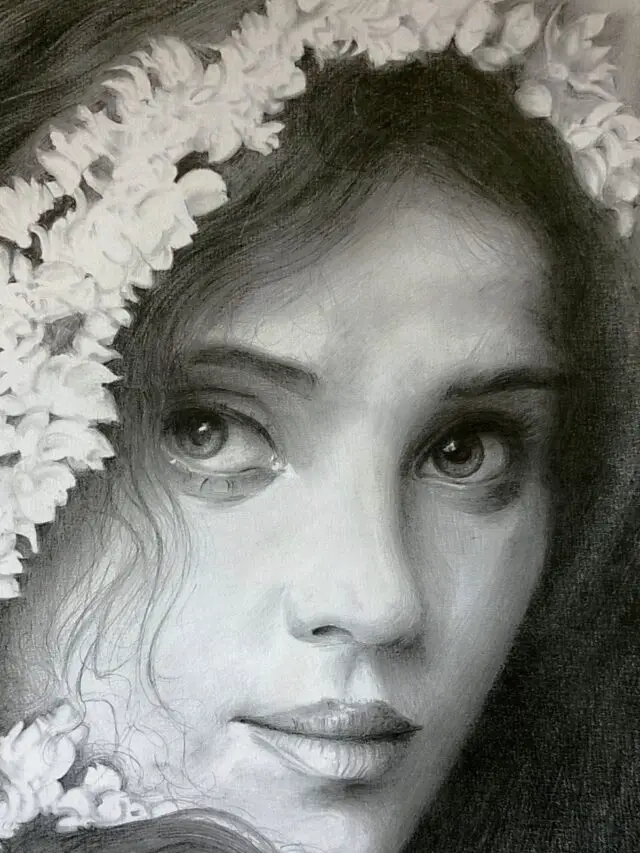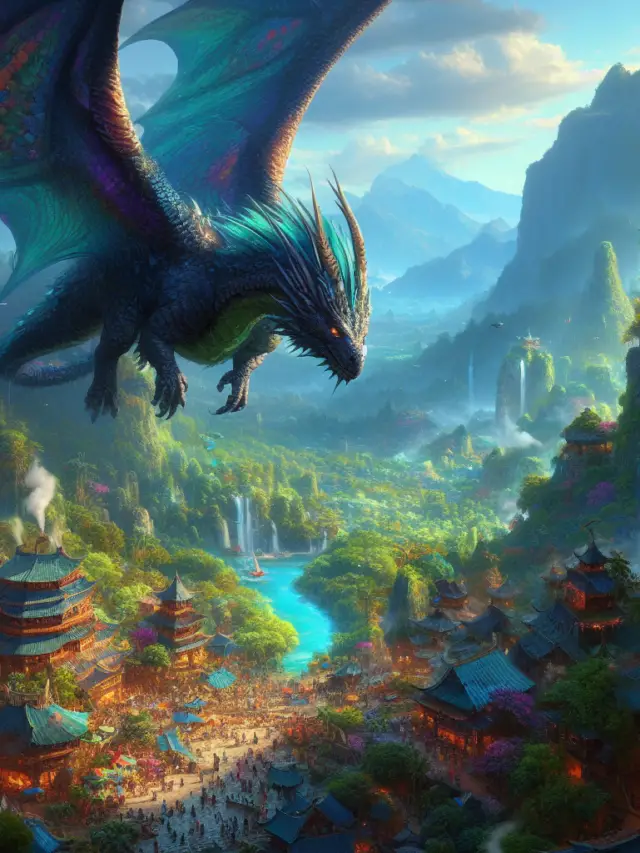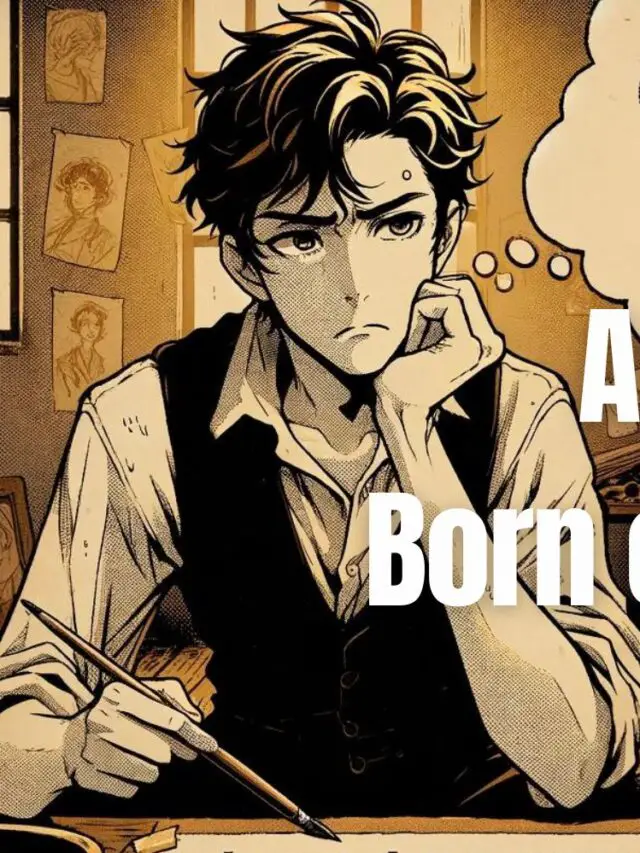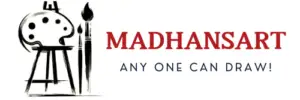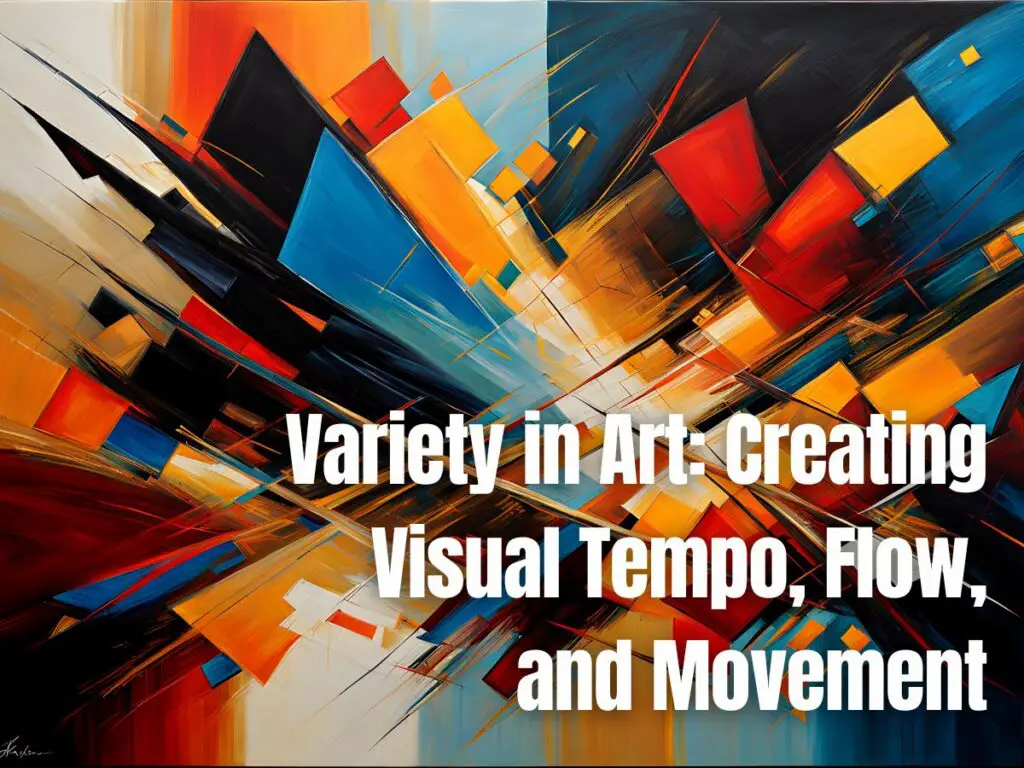The concept of variety is integral to the artistic universe, weaving diversity and range into the fabric of creative expression. Variety in art catapults a mere collection of materials into a visual journey, highlighting the confluence of different elements that speak in a language richer than words.
As we unravel the layers of art, incorporating variety is a testament to artists’ boundless creativity, beckoning observers into a world where the uniform gives way to a spectrum of surprise and discovery.
Table of Contents
What is Variety in Art?
Variety in art refers to using differing “art elements” within a single artwork to create interest and engage the viewer. This concept is fundamental in art variety to prevent monotony and breathe life into a piece.
Artists achieve a dynamic composition by juxtaposing various shapes, colors, textures, and other visual elements. The intentional selection of diverse components ensures that each area of the artwork holds a unique value, contributing to the overall narrative the artist aims to convey.
What is the Definition of Variety in Visual Art?
Variety in art refers to using diverse elements and principles within an artwork to create interest, contrast, and complexity. It involves the incorporation of different shapes, colors, textures, sizes, and materials, ensuring that no single aspect overwhelms the composition but rather contributes to a harmonious yet dynamic whole.
The definition underscores the pivotal role of variation in capturing and retaining the viewer’s attention. Variety can manifest through myriad aspects, from color palettes and shapes to textures and themes, each adding a layer of complexity and richness to the visual experience.
To know more about Art, check here: What is Art?
How is Variety a Principle of Art?
Variety is a principle of art that maintains visual excitement and prevents repetitiveness. Some of the reasons why variety is a principle of art are listed below:
- Variety Incorporates diversity through the use of different elements or forms.
- Variety Juxtapose opposing features to create contrast.
- Variety weaves a thread of unexpected twists within the artwork.
The principle of variety plays into the broader scope of the principles of art by anchoring the viewer’s attention and establishing a rhythm that guides the eye across the canvas. In closing, variety is the spice that flavors the artwork, ensuring that each glance reveals a novel aspect previously unnoticed.
How to Create Variety Using Elements of Art?
Creating variety in artwork involves strategically harnessing the visual elements of art. Artists weave these elements together to craft a diverse visual landscape.
For instance, blending smooth and rough textures or contrasting vibrant and muted hues can dramatically enhance visual interest. The magic lies in using these elements creatively to introduce a level of sophistication and nuance, allowing each section of the artwork to echo its own unique voice while still contributing to the harmony of the whole.
Variety Using Lines
Lines in art serve as the fundamental framework for variety, from line drawing to the proportion of lines. The brush or pencil stroke can be manipulated to manifest in straight lines or soft lines or undulate wildly in spirited gestures. Lines can carve out space or suggest movement.
Artists can use variety through varying line weight, direction, and rhythm to introduce line variety, a characteristic that can significantly alter a piece’s mood and structural integrity. Whether through the meticulous cross-hatching of a pen or the fluid sweep of a brush, lines are a robust tool in the artist’s arsenal to craft diversity.
Variety Using Shapes
Shape variety emanates from the use of distinct shape forms within art pieces. Shapes can be geometric, with hard, defined edges or organic shapes, mimicking the freeform patterns found in nature.
An artist might populate a scene with a series of geometric shapes to suggest rigidity, then break the pattern with a stray organic form to surprise and delight the viewer. In doing so, shapes become a language speaking to the theme and emotion of the work, enhanced by their diversity and arrangement.
Variety Using Forms
Forms variety explores the dimensionality and depth introduced through varied forms. Unlike the two-dimensional nature of shapes, forms in art occupy three-dimensional space and offer a fuller representation of reality.
Artists can use light and shadow to suggest the bulk of a form or degrade a form’s clarity to suggest distance or ambiguity. The choice of form, from the robustness of a boulder to the delicate curves of a flower, injects life into the piece, allowing a static image to evoke the illusion of space and mass.
Variety Using Textures
Texture variety is achieved when artists utilize different tactile qualities in their creations. Texture in art isn’t just about how something might feel if touched; it’s as much about the perception of touch, evoking the sense through visual cues.
The roughness of a tree’s bark, the softness of fur, or the smooth surface of a still pond can all be implied through technique. Artists can create texture using many methods, from actual texture through mixed media to simulated texture with clever paint application, each adding a distinct dimension to the work.
Variety Using Colors
Color variety plays a pivotal role in enlivening an artwork with different hues. Colors can whisper soft harmonies or shout with vibrant intensity. Artists wield colors like a conductor directs an orchestra, each hue playing its part in the visual symphony.
The contrast in color schemes, values, saturation, and temperature of colors add depth and interest to the image, invoking feelings and reactions from the viewer. The strategic choice of colors can transform the narrative of an artwork, making it resonate on a more profound level.
Variety Using Value
Value variety refers to the range of lightness or darkness within art. It’s about the contrast between the highlights and the shadows, the gradations that suggest form and dimensionality.
Values in art can be skillfully manipulated to guide the viewer’s focus, create a mood, or suggest a time of day. The mastery over the subtle shifts in value can elicit an emotional response, adding a complex layer to the storytelling of a piece.
Variety Using Space
Space variety encompasses the artful manipulation of positive and negative spaces. Space in art is the frontier between objects and the area around them. The deliberate arrangement of objects can imply depth, create emphasis, or suggest movement.
This dance between the occupied and the empty, the seen and the unseen, tantalizes the viewer’s imagination, inviting them to fill in the gaps with their own interpretations.
What are the Different Types of Variety in Art?
The different types of variety in art encompass several methods to add and elevate a work of art. Artists have a plethora of approaches at their disposal to inject diversity into their creations.
Using color schemes, textures, shapes, and themes can challenge viewers’ expectations and evoke emotions. Whether through bold, contrasting elements or a subtle array of differences, the types of variety present in the artwork are as numerous as the artists themselves.
Pattern Variety
Pattern variety includes the diverse and repeated decorative designs used in art. Patterns can create rhythm and consistency within an artwork, establishing a backdrop against which other forms of variety can stand out.
Artists can play with patterns’ scale, orientation, and complexity to introduce variation within repetition, making even the predictable elements of a piece an adventure to behold.
Scale Variety
Scale variety refers to the difference in size and proportion between elements in an artwork. It’s a powerful tool that plays with perception and can alter the focal point of a scene.
By contrasting large forms against smaller ones, artists can imply importance or significance, creating a hierarchy of visual elements. This variety in proportion and scale can impact a work’s storytelling and emotive content, adding a dynamic sense to a static image.
Repetition Variety
Repetition variety uses repeated elements to create a sense of coherence and rhythm. Despite being based on similar elements, the variety comes from subtle changes in the repeated forms.
For instance, a sequence of columns may have varying heights or ornamentation, which introduces diversity while retaining a unifying theme. This variation within the repetition commands attention and can guide viewers through the artist’s intended narrative.
Conceptual Variety
Conceptual variety is the divergence in the ideas and themes embodied within an artwork. It can amalgamate different cultural symbols, historical references, or ideological concepts.
This variety allows artists to communicate multifaceted narratives, offering layers of meaning that may require contemplation and yield multiple interpretations. By integrating such a span of concepts, artists can engage not just the viewer’s eye but also their intellect and emotions.
Technique Variety
Technique variety involves the various artistic methods and approaches available to the creator. Whether using impasto to build texture or the delicate touch of watercolor washes, each technique carries its own characteristics.
Artists often combine these techniques within a single work to add complexity and create an engaging visual texture that commands the viewer’s full sensory engagement.
Composition Variety
Composition variety is the artful arrangement of elements within an artwork to create visual diversity. It’s about orchestrating the variety of differences so that each part of the composition contributes uniquely to the overall piece.
Through the thoughtful placement of subjects, objects, and spaces within the frame, artists guide the viewer’s eye across the canvas, allowing them to discover the narrative thread that weaves the disparate elements into a cohesive whole.
Medium Variety
Medium variety brings together a range of artistic materials and tools. This can span traditional oils and acrylics to experimental media like found objects or digital interfaces.
Each medium possesses its own inherent qualities and possibilities, allowing for diverse expressions and tactile sensations. Whether through the gloss of glazes or the innovation of interactive installations, the choice of medium significantly influences the versatility and impact of the artwork.
Style Variety
Style variety is exemplified through the myriad of artistic movements and personal expressions that define the look and feel of an artwork.
Whether it channels the precision of realism, the emotional fervor of expressionism, or the bold simplicity of minimalism, style impacts how the variety is interpreted and appreciated. The artist’s signature or an era dictates the use of certain elements to achieve the quintessence of that visual language.
Narrative Variety
Narrative variety refers to the differing stories and messages that art can convey. It’s the breadth of human experience and imagination translated through visual media.
From historical epics to personal introspections, the narrative determines the direction of the variety used, guiding the viewer along a path filled with symbolic and literal signposts that lead to a richer understanding of the piece.
Brushwork Variety
Brushwork variety encompasses the range of strokes and techniques that apply pigment to the surface. Each brushstroke carries the potential to infuse the painting with movement, texture, and emotion.
The diversity in the application can range from the wide swathes of a flat brush to the delicate point of a fine liner, each leaving its own distinctive mark and contributing to the overall heterogeneity of the artwork.
How is Variety Related to Other Principles of Art?
Variety is intrinsically related to other principles of art, adding depth and enrichment to design. As one of the core principles of design, variety interacts with and enhances other principles such as balance, unity, and emphasis. It aids in creating focal points and visual pathways, orchestrating how the viewer’s eye moves across the artwork. By understanding how variety interplays with these principles, artists can craft more compelling and sophisticated works of art.
Balance
Balance in art is the visual equilibrium that can be achieved through the thoughtful use of variety.
By distributing visual weight across the composition, often through varied elements, an artist can achieve a sense of stability or dynamic tension within a piece. Balance relies on variety to establish a coherent visual narrative, whether symmetrical, asymmetrical, or radial.
Movement
Movement in art is the suggestion of action or the path the viewer’s eye follows.
Variety aids in creating movement by contrasting elements such as line direction, shapes, or colors, leading the eye on a visual journey. This guided movement can tell a story, evoke an emotion, or heighten the impact of the artwork, bringing static images to life.
Rhythm
Rhythm in art creates a visual tempo and flow, similar to musical rhythm.
Utilizing variety within repeated elements generates this visual beat. Rhythmic patterns can progress with spacing, size, or color variations, imbuing the piece with a lively dance that engages and guides the viewer through the artwork’s narrative.
Unity
Unity in art is the sense of oneness or cohesion within a work.
Despite diverse elements, the variety must work harmoniously to unify the artwork. The delicate balance of variety and unity allows a diverse composition to feel cohesive and complete, reflecting the artist’s singular vision.
Harmony
Harmony in art is the pleasing combination of different elements to form a consistent whole.
Variety contributes to harmony by allowing contrasting elements to coexist to complement each other, creating a visual relationship between parts of the composition that resonates with viewers.
Proportion
Proportion in art refers to the comparative relationship of sizes between different parts of a work.
Variety in proportion can emphasize the importance, create focal points, or develop a sense of realism or distortion. It adds to the narrative and mood, guiding the viewer’s perception of space and significance.
Emphasis
Emphasis in art highlights the most important elements of a composition. Artists can draw attention to a particular area or subject through variety, making it stand out amongst the broader elements.
The strategic use of contrasts or anomalies within the artwork ensures that the focal point is communicated to the viewer.
What are some Famous Examples of Varieties in Artwork?
Starry Night by Vincent van Gogh is a stellar example of variety in artwork, where the swirling sky contrasts with the structured village below, creating a dynamic and moving scene.
The painting features a spectrum of blues and yellows, adding depth through the multitude of hues and brushstrokes, contributing to its enduring fascination.
Vincent van Gogh’s “Starry Night”
“Starry Night” demonstrates brushwork variety through Vincent van Gogh’s signature impasto technique. Van Gogh’s use of thick, swirling paint creates a textural variety that is almost tactile.
The composition is further varied by the juxtaposition of the calm village against the tumultuous sky, with the crescent moon and stars adding points of bright contrast in color and shape.
Pablo Picasso’s “Les Demoiselles d’Avignon”
“Les Demoiselles d’Avignon,” by Pablo Picasso, illustrates variety through its fragmented representation of figures and space. Picasso’s radical departure from traditional representation showcases his innovative use of geometric shapes and perspective.
The provocative positioning of figures and the abstracted forms demonstrate a break from the past and an embrace of variety as an artistic principle.
Leonardo da Vinci’s “Mona Lisa”
The “Mona Lisa” by Leonardo da Vinci epitomizes variety through subtle value shifts and detailed rendering.
The subject’s enigmatic expression is enhanced by the careful gradation of light and shadow across her face, adding depth and intrigue. The composition is further enriched by the varying textures of her clothing, the soft landscape in the background, and the nuanced skin tones.
Jackson Pollock’s “Autumn Rhythm”
Jackson Pollock’s “Autumn Rhythm” exemplifies variety through its abstract expressionist technique. His “drip” technique produces an intricate web of lines and forms without a central focus point.
The large scale of the work allows for a sensory immersion as the viewer’s gaze meanders through the rich tapestry of interlaced paint splatters and strokes, each adding to the overall sense of rhythm and movement.
Salvador Dalí’s “The Persistence of Memory”
“The Persistence of Memory” by Salvador Dalí introduces variety through the surreal distortion of common objects. The iconic melting clocks suggest a fluidity of form in contrast to the more rigid structure of the landscape and block-like figure. This playful manipulation of form and perspective challenges the viewer’s perception of reality, making Dalí’s painting a captivating allegory for the fluidity of time.
How is Variety Shown in Different Types of Art Forms?
Variety is exhibited across different art forms through various techniques, mediums, and styles. Each type of art offers unique opportunities for incorporating variety.
From the strokes of a pencil in a drawing to the layering of pixels in digital art, variety is the element that transcends medium and galvanizes an artwork into captivating the viewer’s imagination.
Variety in Drawing
Variety in drawing can be shown through line proportion, shading techniques, and texture variations. Drawings can exhibit a range of expressions, from the stark contrast of a charcoal sketch to the delicate gradations of pencil shading.
Artists manipulate these elements to convey depth, emotion, and perspective, inviting viewers into a dimensional world sketched from simple lines.
Variety in Painting
In painting, proportion and technique are central in bringing variety to life. Painters have the advantage of color’s visceral impact and the tactile nature of the medium itself.
From the layers of glazing in classical works to the emotive brushstrokes of impressionism, each technique offers a unique sensory and visual experience.
Variety in Digital Art
Digital art introduces variety through limitless versatility in effects and manipulation. With technology as a medium, artists can explore proportions, lines, and forms in unprecedented ways.
The digital canvas becomes a playground for innovation, continually expanding the potential for artistic expression.
Variety in AI Art
AI art showcases variety through algorithmically generated patterns and designs. Combining data-driven creativity with human input, AI art represents a fusion of the calculative and the emotive.
It invites a dialogue on the nature of creativity and the role of variety in the era of machine learning.
Variety in Sculpture
Sculpture manifests variety through three-dimensional forms, textures, and materials. Sculptors might employ proportion differences to captivate the viewer, with smooth marble surfaces contrasting with rough-hewn stone or intricate bronze casting.
The tangible nature of sculpture invites the observer to engage with its variety from multiple angles, discovering something new with each perspective.
What is the Importance of Variety in Art?
The importance of variety in art lies in its ability to enrich and enliven artistic expression. Following are few importance of variety in art:
- It enhances visual interest and keeps the viewer engaged.
- It allows the artist to convey a broader range of emotions and narratives.
- Encourages a deeper exploration and appreciation of the artwork.
Variety is the undercurrent that maintains the vibrancy of art throughout the ages. It is the touchstone of creativity that allows for progressive dialogue and the evolving representation of human expression.
The inclusion of variety not only captivates the audience but also empowers the artist to push the boundaries of the tangible world, creating lasting legacies that resonate across generations.
How Can Beginners Incorporate the Principle of Variety into Their Art?
Beginners can incorporate variety into their art by experimenting with different shapes, colors, and textures.
Exploration and play are essential as novices discover their unique styles and preferences.
Simple exercises, like varying line weights or juxtaposing complementary colors, can train the eye to appreciate and utilize diversity in design.
What are Common Misconceptions About Variety in Art?
Common misconceptions about variety in art often involve misjudging its purpose and application, and a few reasons are listed below:
- Variety does not mean clutter or over-complication.
- It is not at odds with harmony and cohesion.
- Variety in art is not limited to visual elements—it can also refer to thematic and conceptual diversity.
These misconceptions can create barriers to understanding and appreciating the multifaceted nature of art.
However, when correctly harnessed, variety enhances an artwork, not detracts from it.
In education and practice, dispelling these myths is crucial to cultivating a true appreciation for the depth and dynamism that variety brings to the artistic landscape.
How do Unity and Variety in Art Complement Each Other?
Unity and variety are complementary concepts in art, balancing harmony and diversity. Unity creates a sense of cohesion, making different elements feel part of a whole, while variety adds interest, preventing monotony.
Together, they create a dynamic equilibrium, where unity ensures a coherent visual language, and variety maintains visual excitement and engagement. This interplay is fundamental in art, as it mirrors the complexity and richness of the world, blending consistency with surprise to evoke deeper emotional and intellectual responses.
What is Variety in Art Size?
Variety in art size refers to using different scales and proportions to create interest within an artwork.
Artists often play with the size of elements to impact the viewer’s interpretation. For instance, a disproportionately large figure in a scene can become a focal point or convey symbolic significance.
The manipulation of size adds another dimension to the visual narrative, providing insights into the artist’s intent or the piece’s context.
What are the Elements of Variety in Art Appreciation?
Appreciation involves recognizing the nuances in technique, form, composition, and theme an artist uses to engage and communicate.
The elements of variety in art appreciation encompass understanding how different aspects of an artwork interact to create a compelling experience.
Observers can cultivate their appreciation by exploring how variety enriches each piece, deepening their connection with the work and gaining insight into the broader artistic discourse.
Conclusion
In conclusion, variety is an essential spice in art, enriching each creation with dimension and diversity. Through the use of varied lines, shapes, forms, textures, colors, and values, artists captivate and engage with onlookers, creating a visual dialogue that is both complex and inviting.
In this diversity, the true spirit of art flourishes, allowing each viewer to embark on a personal journey through the artist’s vision. By embracing the principles of variety, artists and art lovers can continue to forge connections that transcend the canvas, echoing in the vast hallways of human creativity.
Frequently Asked Questions
-
What is the function of variety in art?
The primary function of variety in art is to prevent monotony. When everything looks the same, it becomes uninteresting. Variety also helps to create visual interest and depth. It also creates a mood or atmosphere or conveys a specific message or feeling.
-
How can you create variety in your artwork?
One way to create variety is to experiment with different mediums, genres, and styles. Another way is to vary the use of colors and textures. You can also experiment with other art techniques and add motion and texture elements. By experimenting with these different elements, you can create a more varied and exciting piece of art.
-
Why variety in art is important?
Variety in art is important because it provides a different perspective and allows people to explore different mediums. It also helps to stimulate the mind and open up new possibilities. In a world where everything seems so mundane and routine, something new and different can be a refreshing change of pace.
-
Does Variety break up unity in a design?
A good designer can use variety to create a sense of unity, balance, and harmony. Too much variety, on the other hand, can quickly lead to chaos and confusion. So it’s important to use variety in moderation and to be mindful of how it impacts the overall design.
-
What is the difference between variety and unity in art?
Variety uses different elements to create interest, contrast, and visual depth. Unity uses those same elements to create a sense of harmony and cohesiveness. Both are important in creating a successful piece of art.
